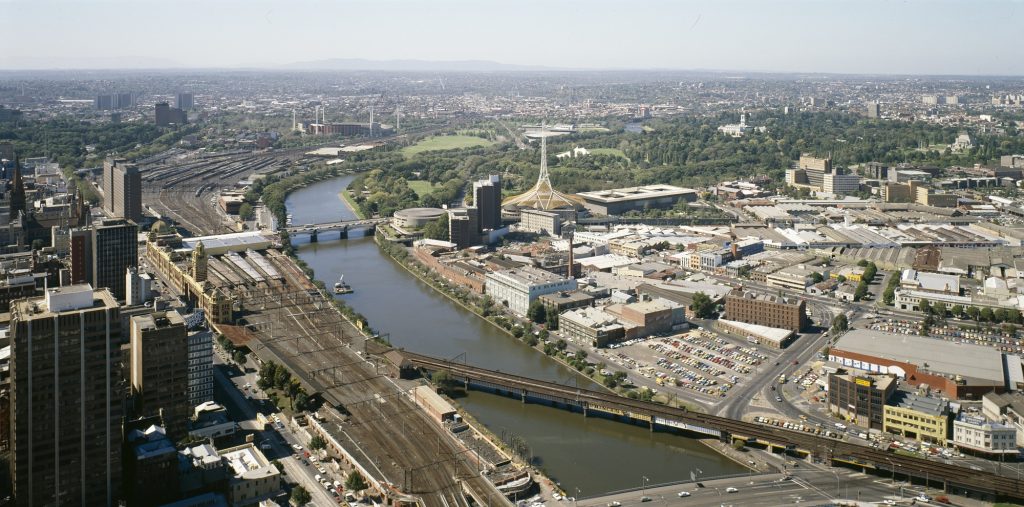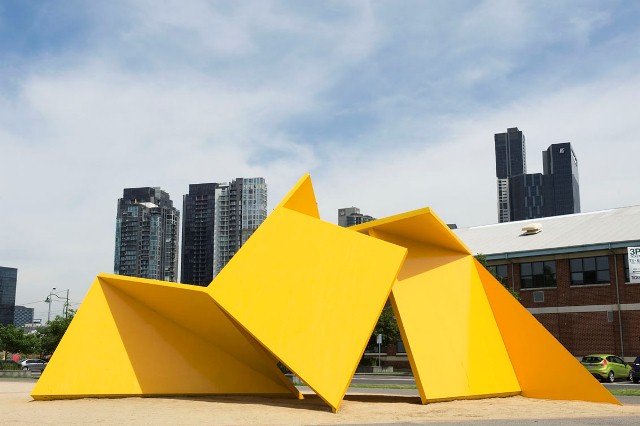National Trust supports new heritage controls for Southbank

In June we prepared a submission in support of Planning Scheme Amendment C305 prepared by the City of Melbourne which proposes changes to the City of Melbourne Heritage Overlay for 48 places in Southbank and South Wharf. The Amendment proposes to apply the Heritage Overlay to 20 additional places, including one precinct, two group listings and 17 individual places, deleting the heritage overlay from 11 places due to buildings being demolished or places being incorrectly mapped, and amending the heritage overly for 17 existing places to correct addresses, descriptions or boundary anomalies.
In our submission we highlighted a handful of places proposed for inclusion within the heritage overlay which we believe reflect emerging variations within the heritage profession, recognising the diversity of Victoria’s shared cultural heritage. The identification of a historic precinct which has been almost entirely subsumed by modern commercial and high rise residential development; the intangible values inherent in the built fabric of the suburbs bluestone laneways; and the politicised historic narrative embodied in a highly significant and iconic contemporary artwork exemplify this methodological shift, and cast the City of Melbourne as bold innovators in the identification and preservation of the city’s tangible and intangible cultural heritage.
City Road Industrial and Warehouse Precinct (H01214)
The proposed City Road Industrial and Warehouse Precinct is ‘historically significant for its rare surviving industrial and commercial buildings which were once the characteristic building type in the area south of the Yarra River’, and aesthetically significance for the range of ‘late Victorian, Edwardian and Interwar architectural treatments of commercial and industrial premises’. We believe that the identification and protection of this precinct will become an important tool in preserving the history and character of an area currently facing extreme development pressure. While many industrial and commercial buildings within the precinct have already been lost or severely altered (particularly through Facadism), the creation of this precinct will ensure that any future permit applications are required to consider the history and character of the precinct more broadly.
Bluestone Laneways Group Listing (H01216)
The proposed bluestone laneways proposed for inclusion under the heritage overlay are historically significant in providing ‘a direct and tangible link to the former industrial and working class residential character of the Southbank area, which has been entirely subsumed by modern commercial and high rise residential development’ and aesthetically significant in retaining the ‘distinctive patterns created by hand skills or their makers, and over 100 years of use producing a smoothly worn patina and fine rutting from steel wheeled delivery vehicles’. We supports assessment, highlighting how intangible history and character can be preserved through the protection of tangible built fabric. As expressed in the proposed Statement of Significance, with so much of the suburb subsumed by modern commercial and high rise residential development, the preservation of the bluestone laneways retains the suburb’s link with its historical architectural character and the actions and activity of past inhabitants.
Vault Sculpture (HO1225)
The Vault Sculpture, designed by Ron Roberston-Swann and installed in 1980, is historically significant ‘as an iconic representation of the politicisation and response to public art, and the conflict between conservative and progressive aesthetic and urban planning ideas,’ with aesthetic significance as a ‘finely finished minimalist abstract sculpture, which has ultimately been accepted and embraced by the art world and general public’. The National Trust Public Art Committee, formed in 2002, currently classifies 1-2 pieces of public artwork per year. While this committee is yet to undertake a cultural heritage assessment of the Vault sculpture, it is currently included on a ‘watch-list’ of significant public works. As such, we applaud the City of Melbourne for identifying the artwork and for progressing statutory controls.
To read our submission in full, please click here.

+ There are no comments
Add yours